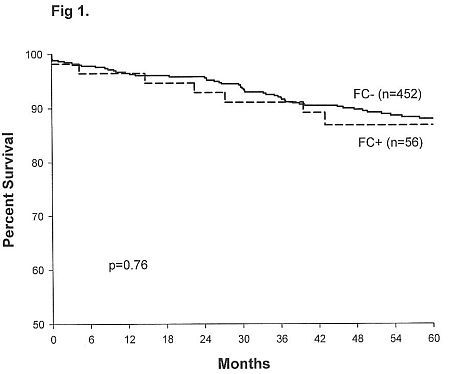Renal Transplantation with Final Allocation Based on the Virtual Crossmatch: Outcomes at 5 Years
Departments of Surgery, Medicine and Biostatistics, Medical College of Wisconsin, Milwaukee, WI
The Blood Center of Wisconsin, Milwaukee, WI
Meeting: 2013 American Transplant Congress
Abstract number: 171
Background: Use of the virtual crossmatch (VC) has been shown to increase the efficiency of identifying compatible renal transplant recipients from a given donor. However the flow crossmatch (FC) has remained the generally accepted method for assessing final compatibility. Since 2005 we have followed a protocol at our center whereby the final allocation decision is based on the VC, not the FC. Here we report the 5 year results using this protocol, with emphasis on outcomes in FC+ (T or B cell) compared to FC- recipients.
Methods: Between Jan. 2005 and Jan. 2010, 508 consecutive kidney-only (VC-)transplants were performed. VC were determined using solid phase assays for HLA antibodies. Primary outcomes are patient, graft survival and incidence of acute rejection within one year (AR<1). Survival data were reconciled with data submitted for SRTR analysis. Outcomes for FC+ (n=56) and FC- (n=452) recipients were adjusted (using a stratified Cox regression model) for co-variates such as age, gender, race, diabetes, donor type (LD vs DD), duration of dialysis, retransplant and PRA.
Results: Mean follow up is 5.1 years. FC+ recipients (n=56)were significantly different from FC- recipients (n=456) for the following risk factors: LD (23% vs 39%, p=0.03), duration of dialysis (40.7 mo vs 33 mo, p=0.001), retransplant (16% vs 7.3%, p=0.04), PRA>0 (64% vs18%, p=0.001), PRA> 80% (21% vs 3.5%, p=0.001). Risk adjusted 5 year graft survivals are 85 and 86% (figure1). AR<1 occurred in 13% FC+ and 12% FC-. Significant risk factors for graft loss include DD (RR 2.7, p<0.001) and diabetes (RR 2.0, p=0.003) but not crossmatch status (RR 0.95). Subset analysis limited to sensitized patients only (n= 36 FC+ and n=82 FC-) shows 3 year actual graft survivals of 87% and 92% respectively(p=0.4).

Conclusion: A protocol which utilizes the VC to determine final compatibility can yield good intermediate term results for renal transplantation. Additional time and patient accrual are needed to better assess long term outcomes using this strategy.
To cite this abstract in AMA style:
Johnson C, Zhu Y, Zhang M, Shames B, Roza A, Cronin D, Hariharan S, Schiller J, Ellis T. Renal Transplantation with Final Allocation Based on the Virtual Crossmatch: Outcomes at 5 Years [abstract]. Am J Transplant. 2013; 13 (suppl 5). https://atcmeetingabstracts.com/abstract/renal-transplantation-with-final-allocation-based-on-the-virtual-crossmatch-outcomes-at-5-years/. Accessed December 29, 2025.« Back to 2013 American Transplant Congress
